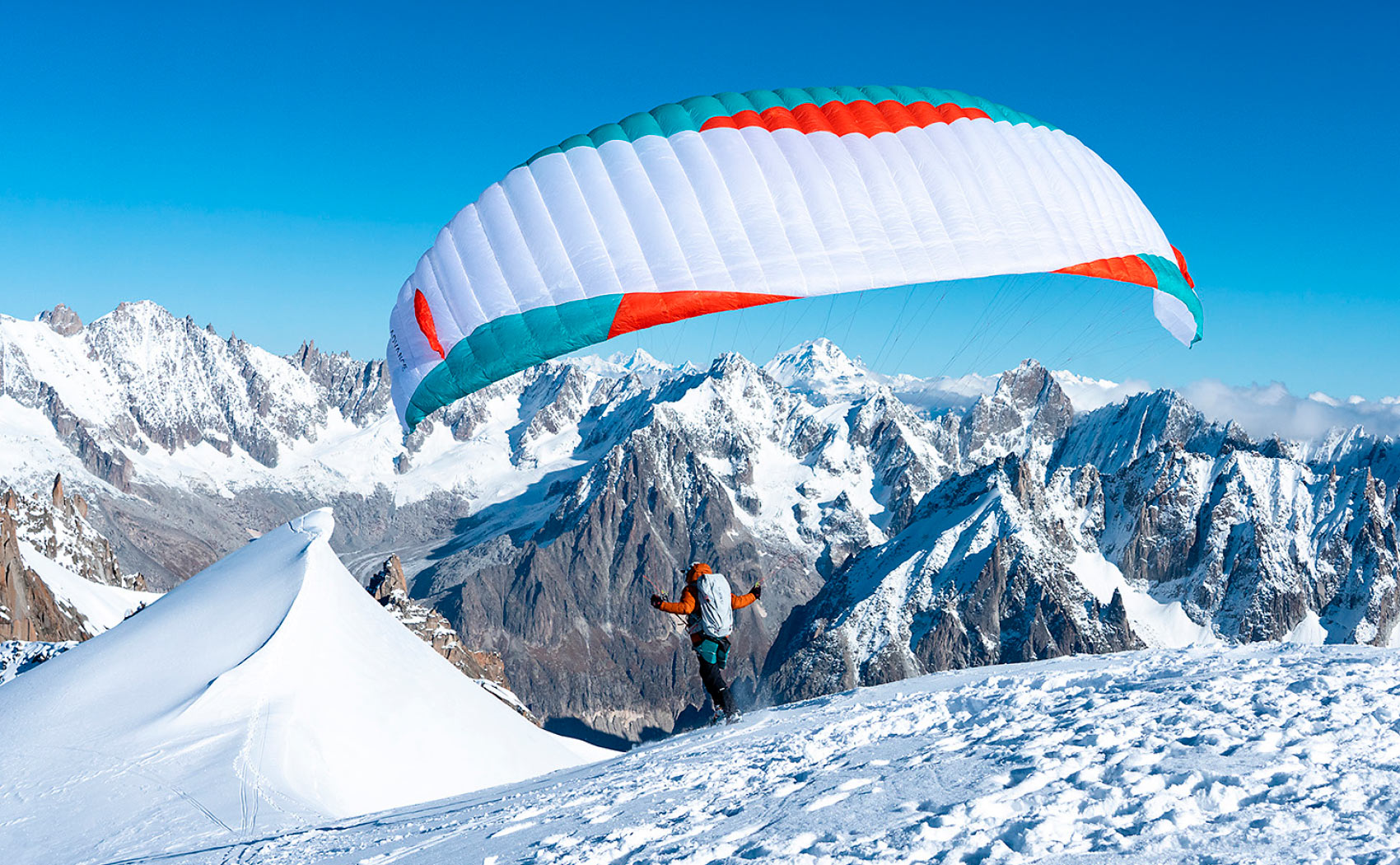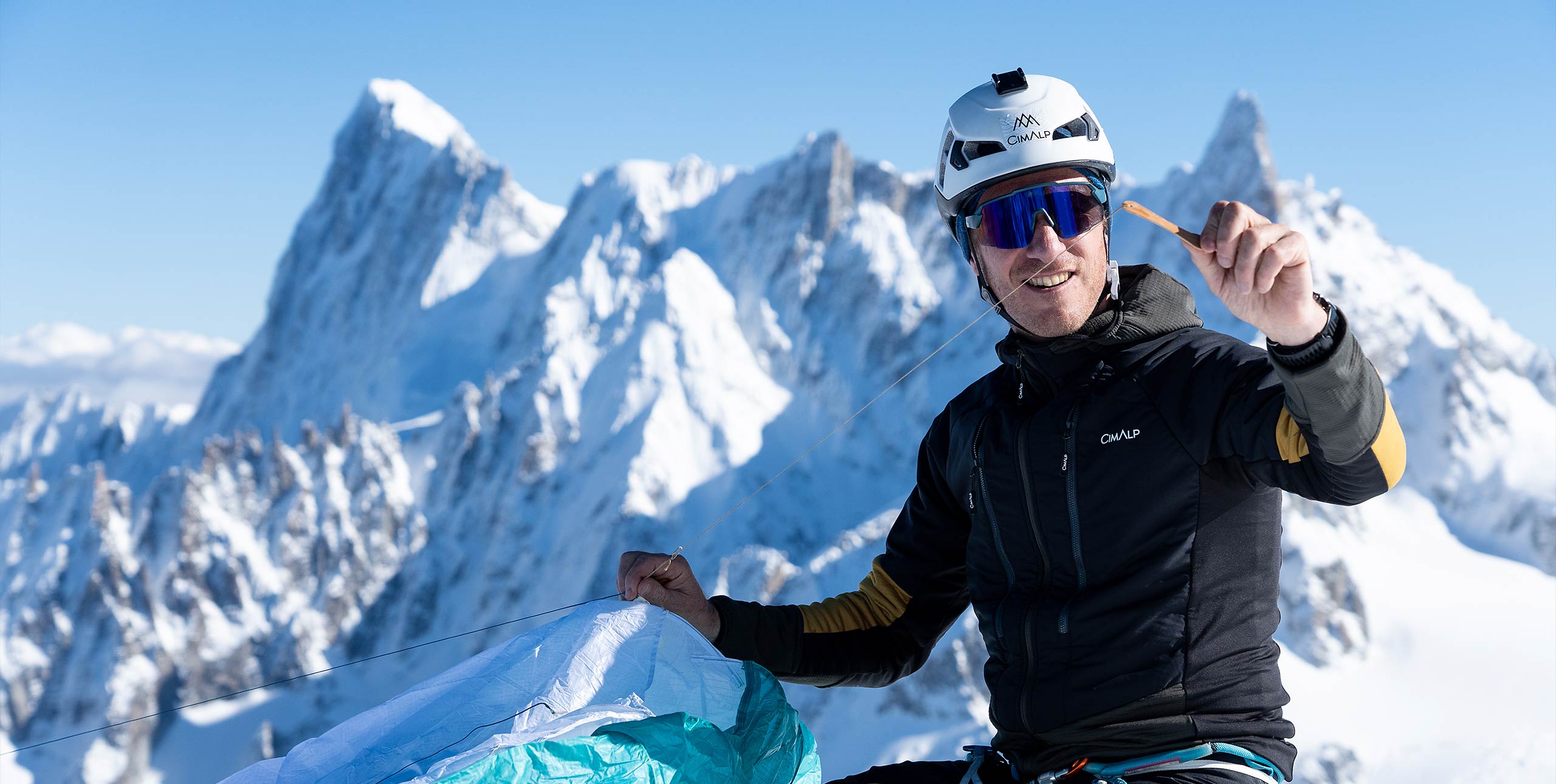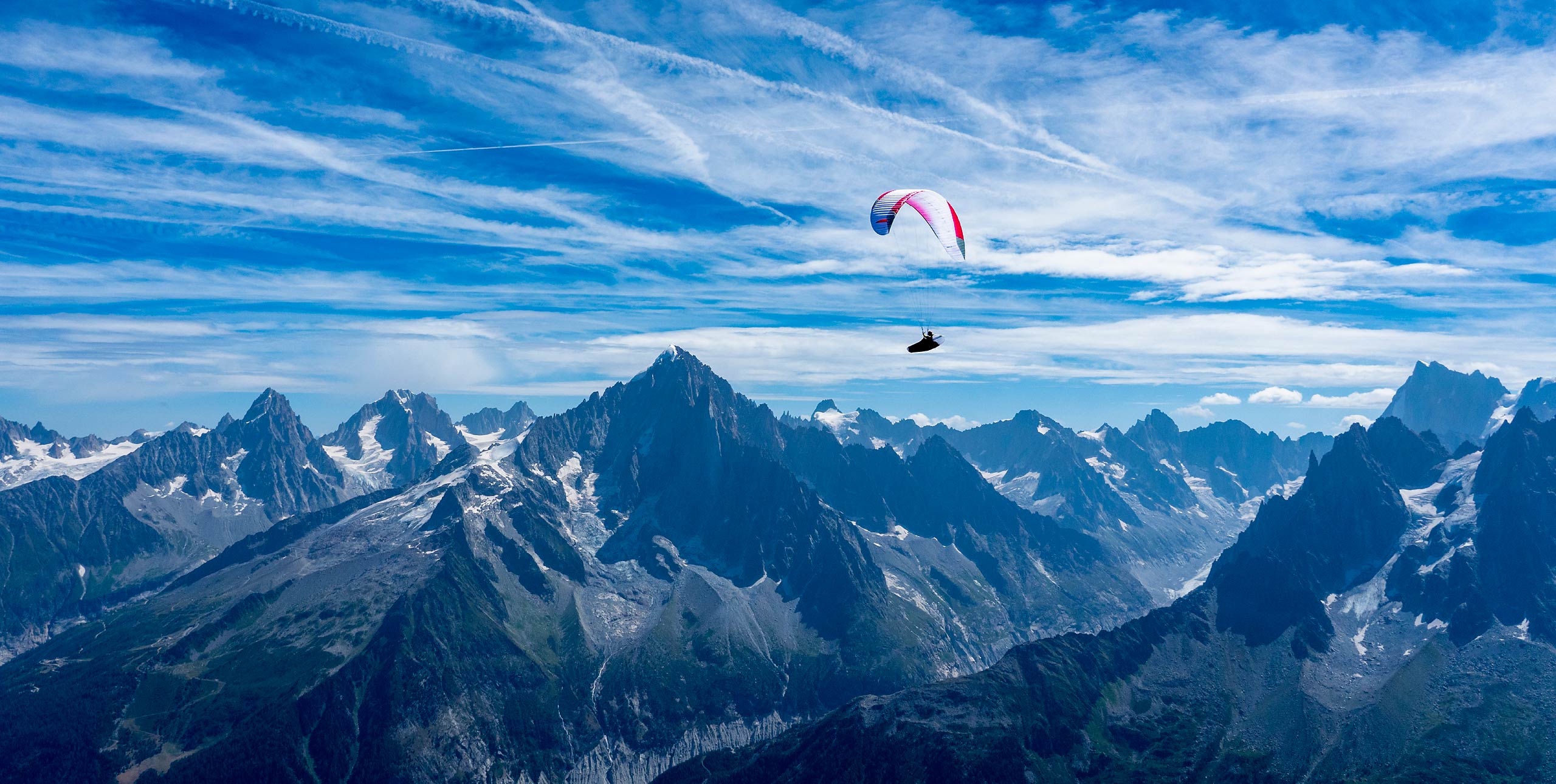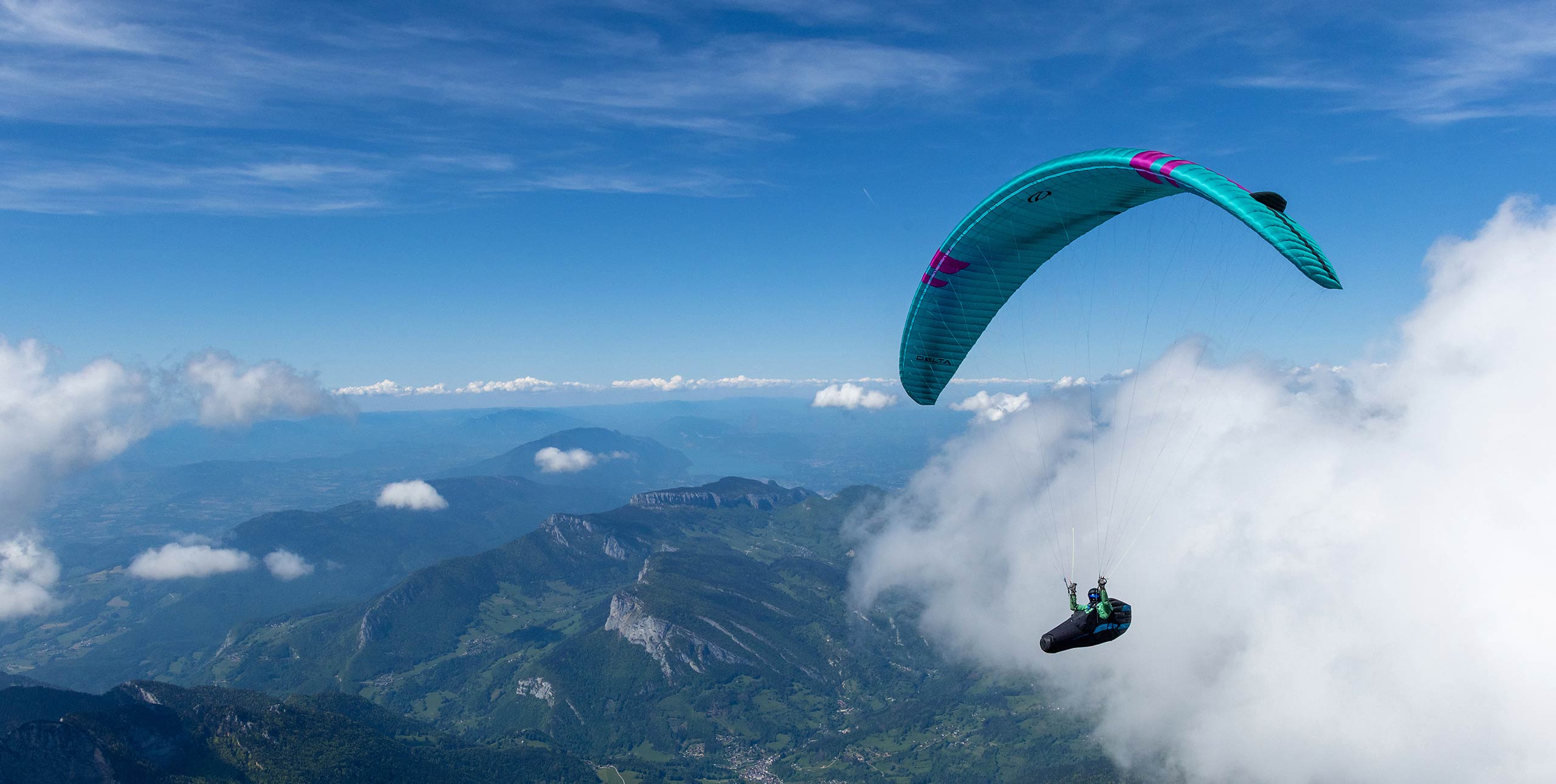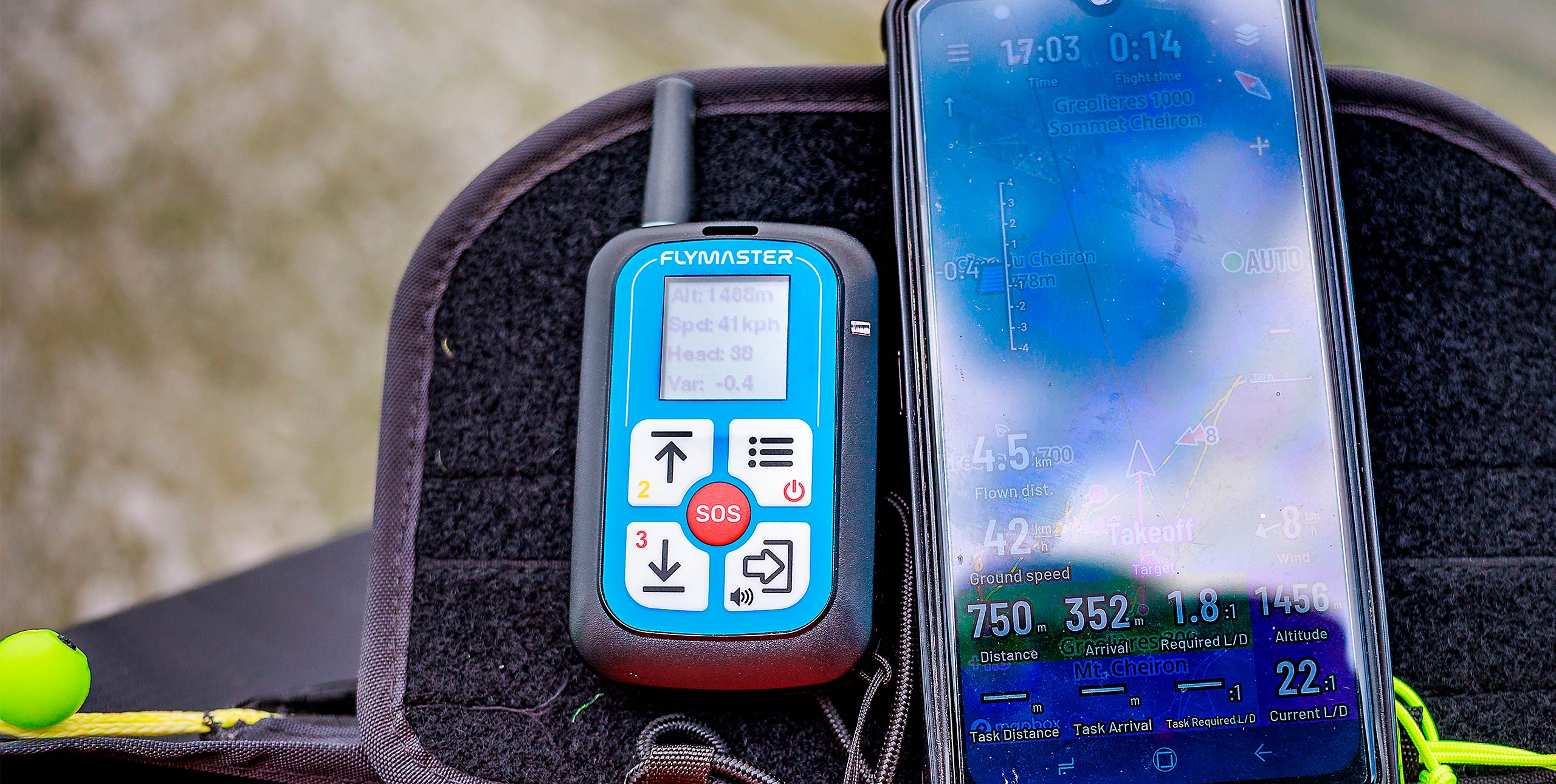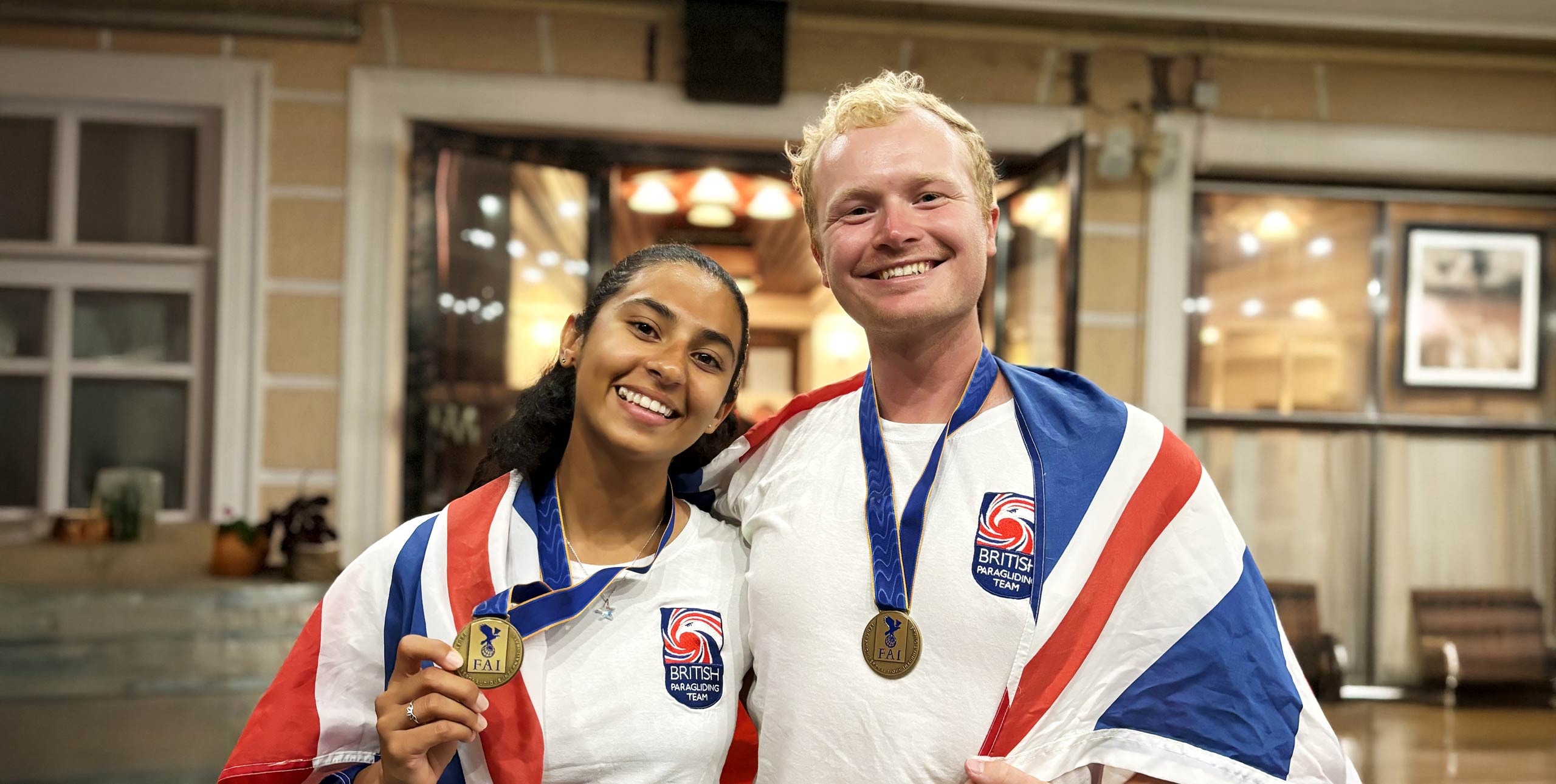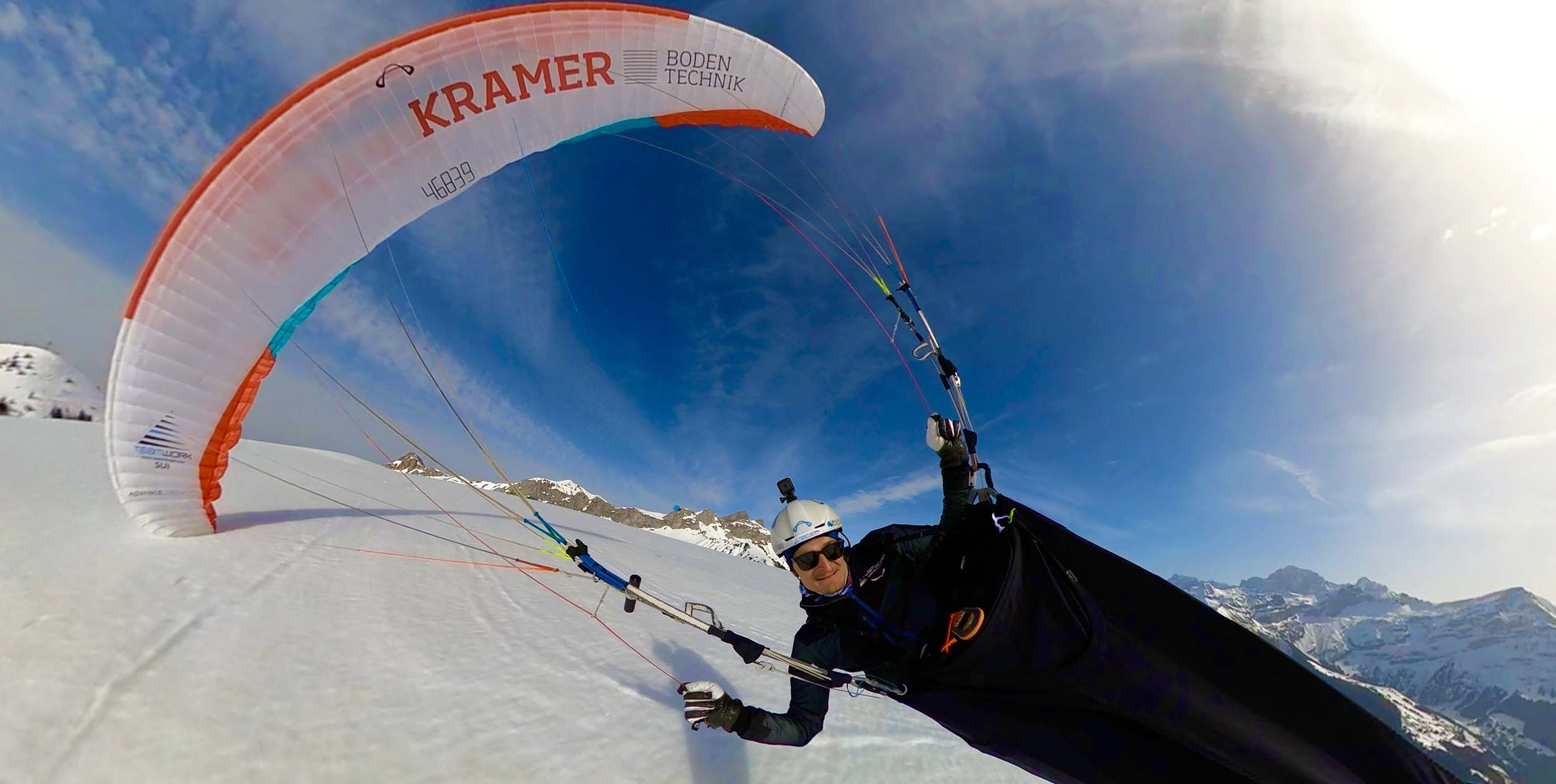
Primarily, taking great photos while paragliding should be about practical handling. How do you take off with a selfie stick or a followcam without affecting safety? What is suitable for everyday use? How can you still enjoy the flight without being constantly busy with the cameras? And how the hell does the selfie stick disappear from the photo? Reto Reiser explains how to get those killer shots.
What camera to use?
My recordings are made with various cameras from GoPro. The GoPro MAX for 360 degrees, the Hero 8 and Session. The cameras are set to record a video in the best quality by pressing only one button. I cut the photos out of these videos.
It’s worth mentioning that this technique works great for digital and screens, but if you want to print the images, then the standard still-photo mode offers the best quality; but you will never catch the perfect moment with it.
So that you don’t end up with a tonne of video at the end of the day, I prefer perspectives where I can switch the camera on and off directly and thus only record short sequences. There is a new Bluetooth remote control for GoPro, but this makes it all a bit more complicated again. All my pictures and videos are edited directly with my mobile phone in the GoPro Quik App, also available for Android.
From the back
If you put the selfie stick between the harness and your back, in the video it looks like you are flying by yourself. This perspective is often used in speed flying. It is very easy to set up in the air, but after a while the stick in the back becomes a bit uncomfortable. Ordinary flight manoeuvres such as wingovers and spirals can be flown without any problems, and the camera does not interfere when landing. Alternatively, you can attach the selfie stick to the backpack of the harness. This offers an even more natural angle, but you can no longer mount/dismount it in the air and take-off is error prone.
In the karabiner
You can push the selfie stick through the karabiner from the outside. The end of the stick can either be pushed through the karabiner on the other side or it can be clamped or fixed with Velcro to the waist strap. Like this, almost all manoeuvres can be flown, even a ground spiral during landing. It should never be done on the side of the rescue handle.
Upper thigh
With harnesses without a pod, the stick can be easily tucked under the femur. Like this you see the pilot from the front. All manoeuvres can be flown, even acro flying with infinity tumbling is possible. Landing like this is not recommended, so give yourself height and time to stow the stick before you land.
In the pod
With a pod, you can put the stick through the leg bag next to the karabiner and tuck it beside your butt, so it looks back at you.
Followcams
Followcams are increasingly popular. They offer a natural perspective with the greater distance to the pilot. The classic followcams are paired with a normal action camera. I use a GoPro Hero 8 for this. The newer models from GoPro all have integrated image stabilisation, which makes much smoother videos.
360-degree cameras are more demanding to use because they are heavier, but they also offer many possibilities. I use the foldable ChaseXC from Skybean. It folds very easily into the size and shape of a selfie stick, so you can easily stow it in your backpack.
Take-off is the most difficult part. I always attach the line to the rearmost line level (not brake lines!) at one of the upper divisions of the innermost line on the left side (opposite the emergency parachute).
For take-off I stow the camera in the harness like a selfie stick. This way I can fully focus on the glider during take-off, even a reverse take-off is possible as usual.
Non-foldable cameras can be attached to the outside of the harness with a small karabiner, but they can be disturbed during take-off. A launch with a fully mounted camera is very error-prone and often the camera collides with the lines. If you still want to take off like this, place the camera as close as possible behind the pilot on the ground.
In flight I set my foldable followcam up ready to fly in a few seconds. I adjust the length of the line so that the camera does not fly in my wake, but I can catch the camera again with a simple swing and pump in the air. This way I can take short videos on long flights and don’t have the memory card full at the end of the day.
Helicopters, full stalls, B-stalls or very high wingovers are not a good idea. Spirals and light wingovers work fine. Very skilled pilots can fly a barrel roll with a mini wing/speedflyer, and even infinity tumbling can be flown.
This is an edited version of an article first published in Cross Country 222 (August 2021). Reto Reiser is a medical doctor from Altdorf in central Switzerland. Flying since 2010 he loves to combine hike-and-fly and XC – and photography. “I always tell everyone how fantastic flying is, but I can’t put my enthusiasm into words. So I started to take pictures.” Find him on YouTube here


